Magnus Nilsson
Magnus Nilsson, the head chef at Fäviken restaurant in Sweden, might be among the lesser-known chefs in this list, but he is a great example of how to inject humour and wit into Instagram. The food he cooks is certainly serious, but Nilsson ensures his own personality shines through by writing exceptionally long captions.
He’s also a fan of ironic hashtags, using them to highlight the occasional absurdity of documenting life on social media.
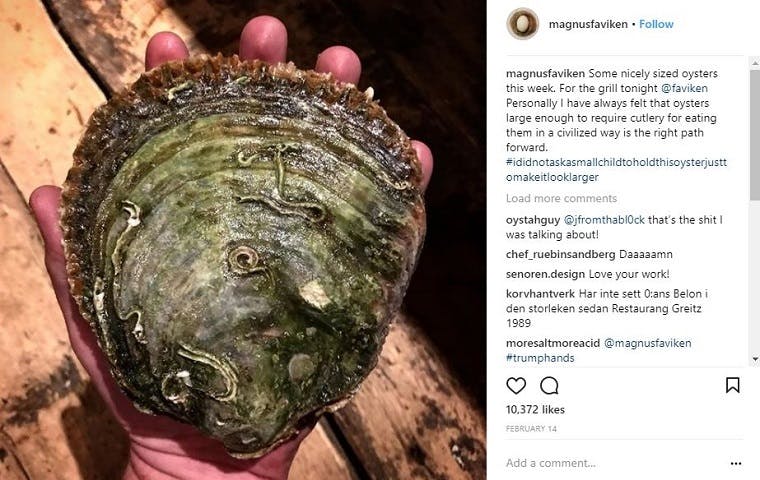
As well as appealing to people who love food, Nilsson also engages users who are interested in nature and travel, using Instagram to convey his restaurant’s dedication to natural and organic produce.
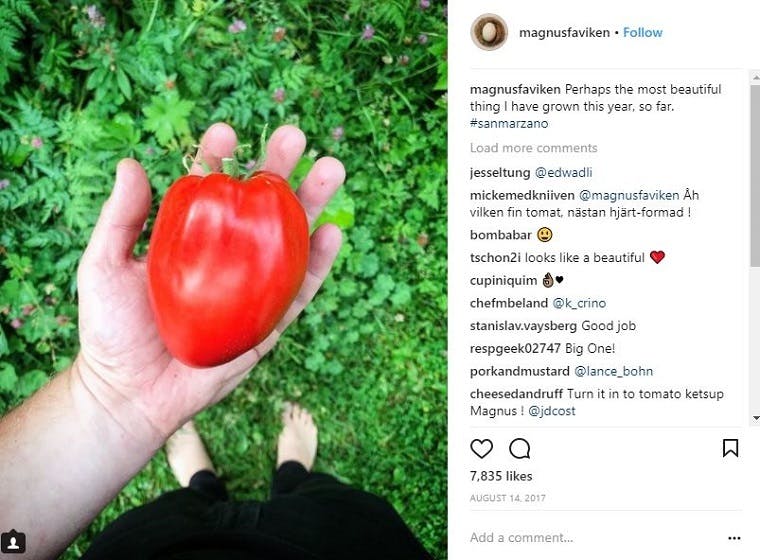
Nigella Lawson
Last year, Nigella Lawson wrote a piece for the Guardian on how ‘Instagram can make a cook despair’. More specifically, it was about how the picture-perfect style of food it promotes is leading people to purposely avoiding cooking ‘brown’ food – which is often the most delicious, Lawson argues.
It’s clear from her own Instagram feed that authenticity is a key part of its success, with the channel effectively highlighting her passion and love for food (of all shades). There is something particularly refreshing about her less-than-glamorous food photography, which stands out among the endless glossy (and frankly unattainable) examples from other chefs.

Consistency is also another reason her 1.1m followers return, with Nigella’s #recipeoftheday series providing daily inspiration on what to cook. It also effectively promotes Nigella’s website, which requires users to sign-up for free in order to get access.
This also indicates that data plays a key role for Nigella, with the information gathered perhaps informing future content and marketing ideas.
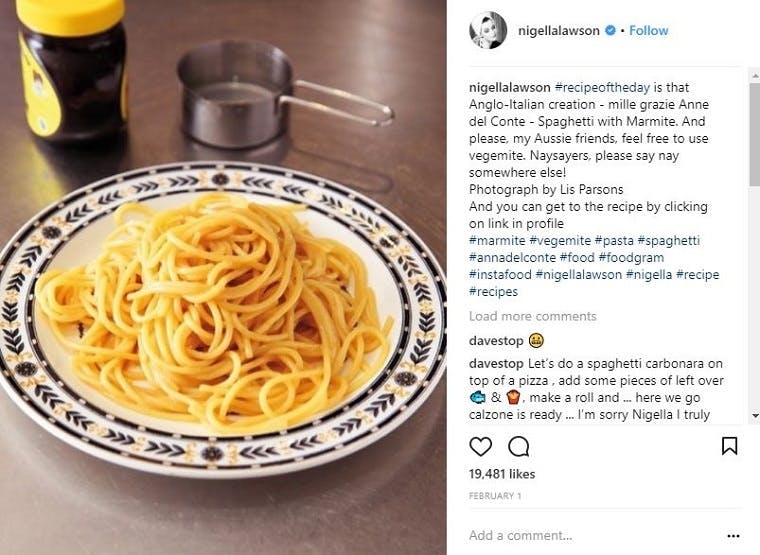
David Chang
While most celebrity chefs promote their own recipes or the food they serve in restaurants, American chef David Chang also posts images of what he eats when out and about.
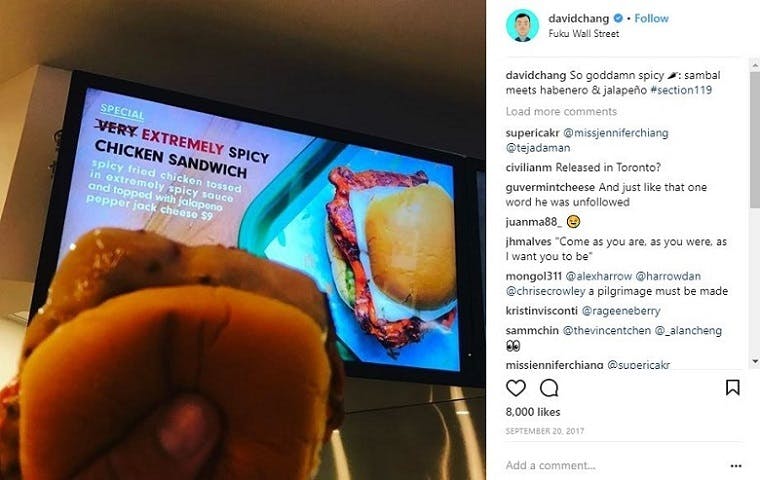
From rare supermarket finds to ball-game burgers, his Instagram feed helps to promote his passion for all types of cuisine, which in turn comes across as authentic and admirable. This strategy also aligns with his Netflix series, Ugly Delicious, which is all about searching for the world’s most satisfying food.
Also noteworthy is Chang’s use of video, whereby he often shows down footage to create the ultimate in ‘food porn’.
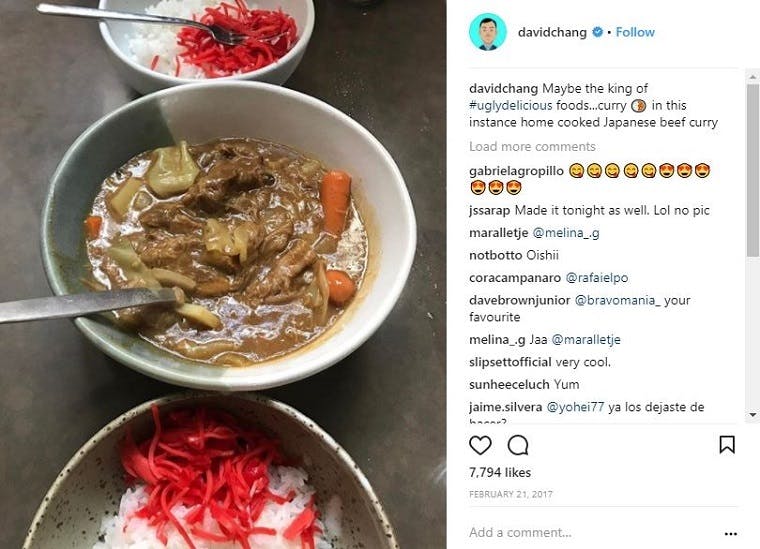
Nigel Slater
With 218,000 followers, Nigel Slater is certainly not in the same league as Jamie Oliver (who also features in this list), however he is a great example of how social media can be used to convey a distinct personality and style.
A self-confessed ‘cook who writes’, Slater has always spoken about food in a more serious fashion – critics might call him overly-earnest or even smug. However, his descriptions of food and how it fits into the context of everyday life is certainly recognisable, and his Instagram feed mirrors this.
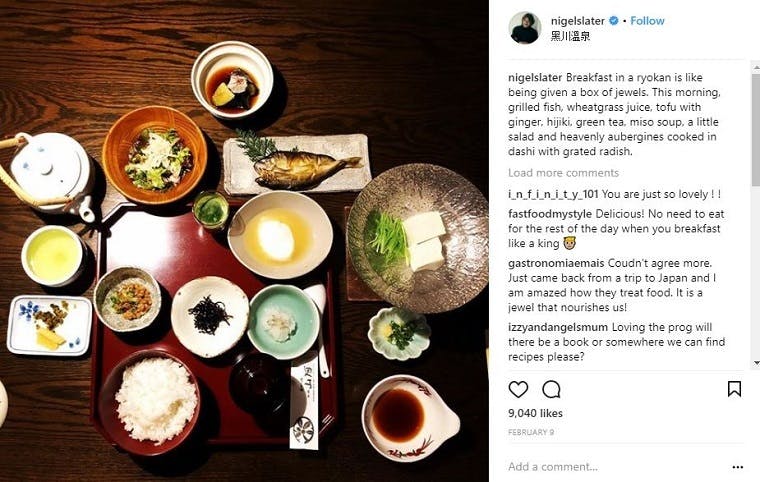
Slater doesn’t always post about food either, often using the platform to convey observations about nature, culture, and travel.
While he might be less concerned about reaching a mainstream audience, Slater has certainly capitalised on Instagram to strengthen engagement with his core followers.
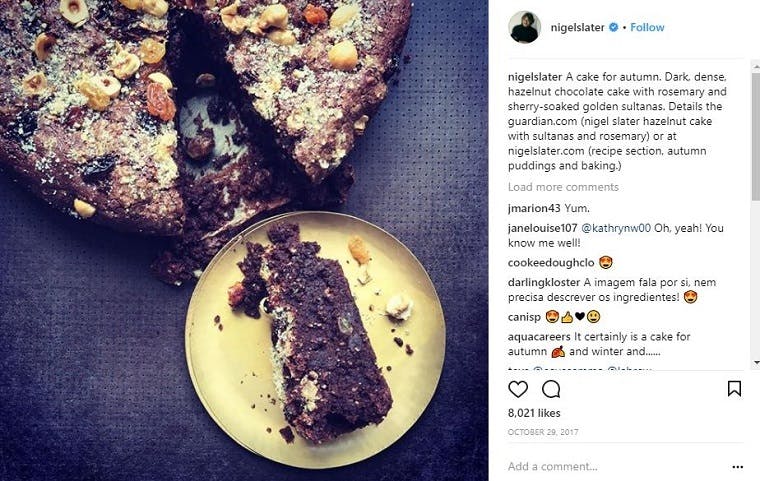
Heston Blumenthal
Unlike previous examples, Heston Blumenthal uses Instagram purely to promote his brand rather than personality. In fact, there is very little of Heston that shines through, but actually, that’s what makes the channel different to all the rest – it’s dedicated to his wider team rather than the man himself.

A lot of the content revolves around the people and places behind the ‘Heston’ brand, i.e. the chefs that work in his global restaurants, as well as the creative bods that work on Heston products and partnerships, like his deal with Waitrose.
There is a hefty portion of food photography too, showcasing the fine food that can be found in various Heston-owned restaurants. However, this is always paired with a ‘behind-the-scenes’ caption from a member of the team. This helps to create a sort of community-feel, giving the audience greater insight into the work that goes on behind the big-name brand.
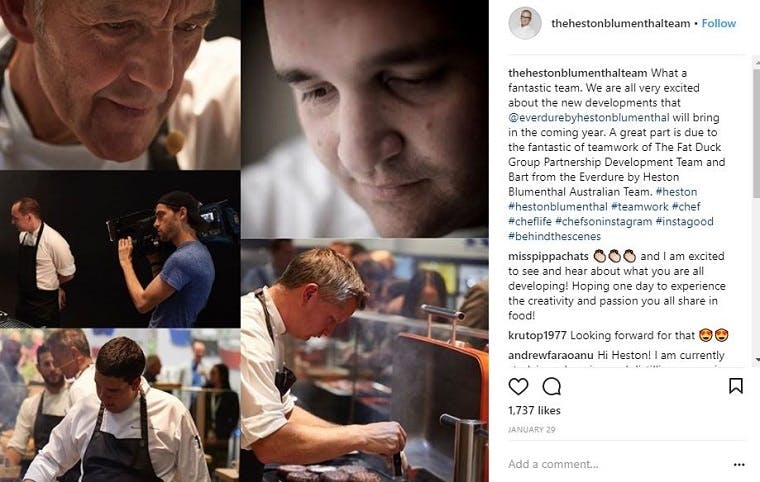
Gordon Ramsay
Though Gordon Ramsay has a separate Instagram channel for his chain of 33 global restaurants, the chef also uses a personal one to effectively cross-promote his fine dining outlets. And while he’s best-known for his tough-talking, no-nonsense personality – Ramsay’s serious dedication to good food is what contributes to most of his success on social.
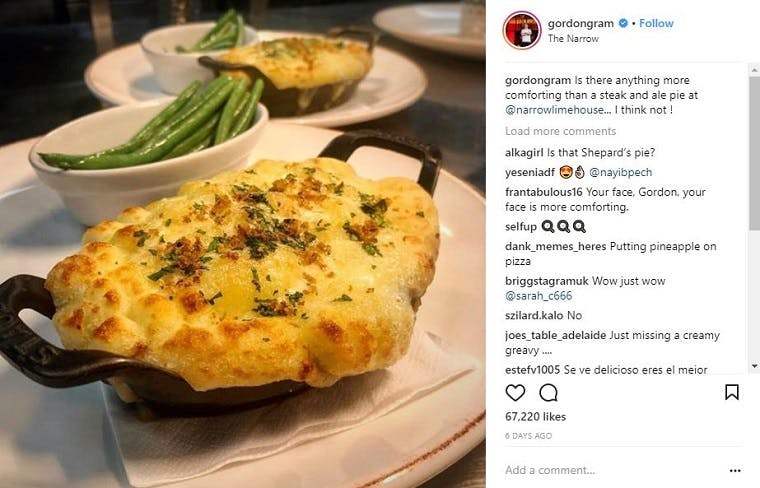
With regular ‘beauty shots’ of some of the best dishes served in his restaurants, the chef is able to drive awareness and directly influence interest (and maybe even bookings) in particular locations.
This is also because there tends to be a seasonal aspect involved, with the chef highlighting what restaurants will be serving on specific occasions like Burns Night or Pancake Day, and capturing search interest around these events.

Jamie Oliver
Jamie Oliver has been a well-known chef and celebrity since the early noughties, appearing on television long before social media even existed. As a result, it’s easy to assume that he needn’t dedicate as much time and effort to digital channels as much as traditional media – the latter is his bread and butter after all.
However, with 6.3m followers, it’s clear that social has been intrinsic to Jamie’s success in recent years, helping to promote everything from his TV shows to social and political campaigns.
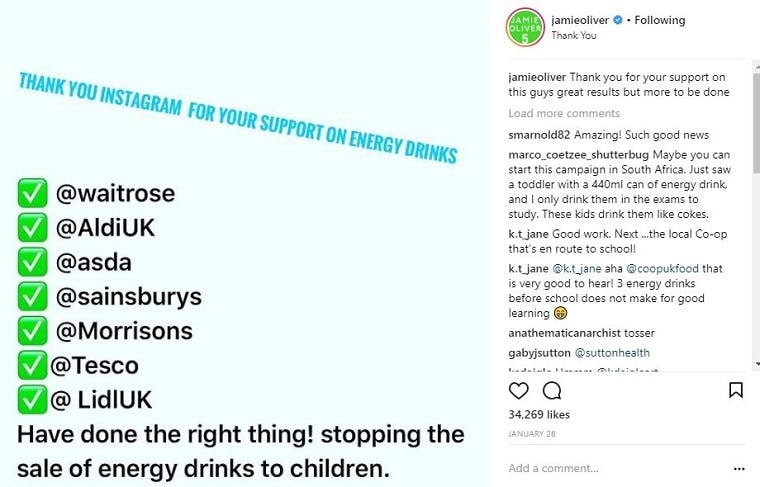
Alongside YouTube, where the chef mostly creates instructional cooking videos, his Instagram is dedicated to showcasing a wider variety of content. Naturally there are recipe ideas and how-to’s, but there are also candid family photos and behind-the-scenes insight.
With captions often written by Jamie himself, the channel strikes a good balance between Jamie the man and Oliver the brand. Consistency also appears to be the key to the channel’s success, with at least one post a day maintaining high levels of engagement.
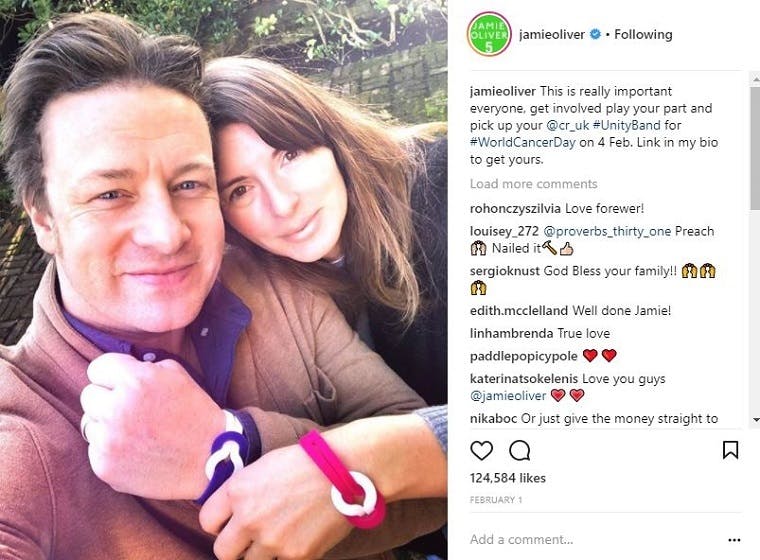
Related reading:
- Five lessons retailers can learn from Wayfair’s Instagram channel
- Five ways charities can use Instagram to drive awareness and engagement
- Six of the best travel brands on YouTube, Snapchat, Instagram, Twitter, Pinterest & LinkedIn
You can also check out Econsultancy’s Social Media Best Practice Guide and our social media training.
![]()

Comments